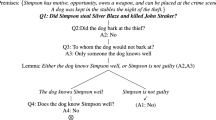Abstract
For Heidegger, phenomenological investigation is carried out by “formal indication,” the name given to the methodical approach he assumes in Being and Time. This paper attempts to draw attention to the nature of formal indication in light of the fact that it has been largely lost upon American scholarship (mainly due to its inconsistent translation). The roots of the concept of “formal indication” are shown in two ways. First, its thematic treatment in Heidegger's 1921/22 Winter Semester course, “Phenomenological Investigations into Aristotle,” is examined to make clear what Heidegger silently assumes in Being and Time. Second, Heidegger's adaptation of Husserl's use of the term, “indication,” is outlined to clarify the concept even more. The enhanced understanding of formal indication granted by these two points leads to a better grasp of Heidegger's concept of truth, for formal indication and truth are mutually implied for Heidegger. Finally, it is suggested that the reader of Being and Time, on the basis of what formal indication demands, approach the work not as a doctrine to be learned but as a task always requiring further completion.
Similar content being viewed by others
Author information
Authors and Affiliations
Rights and permissions
About this article
Cite this article
Streeter, R. Heidegger's formal indication: A question of method in Being and Time. Continental Philosophy Review 30, 413–430 (1997). https://doi.org/10.1023/A:1004250206794
Issue Date:
DOI: https://doi.org/10.1023/A:1004250206794




